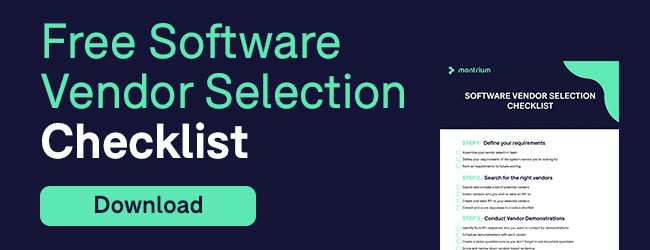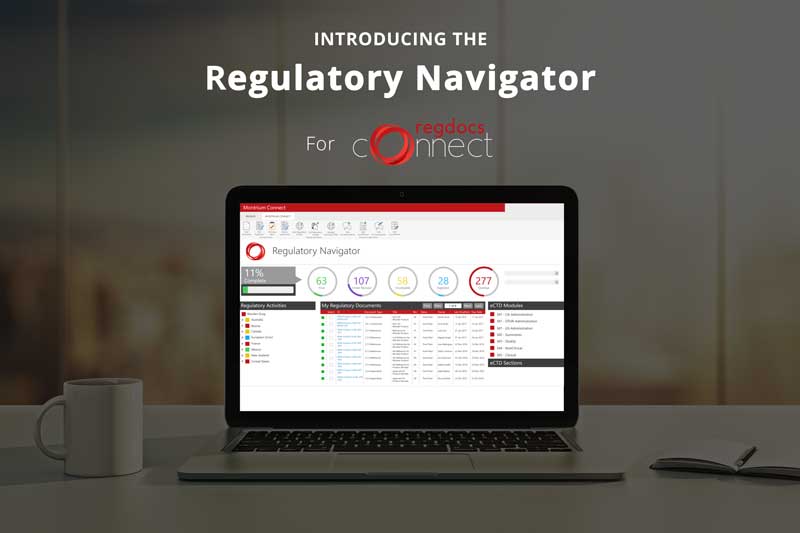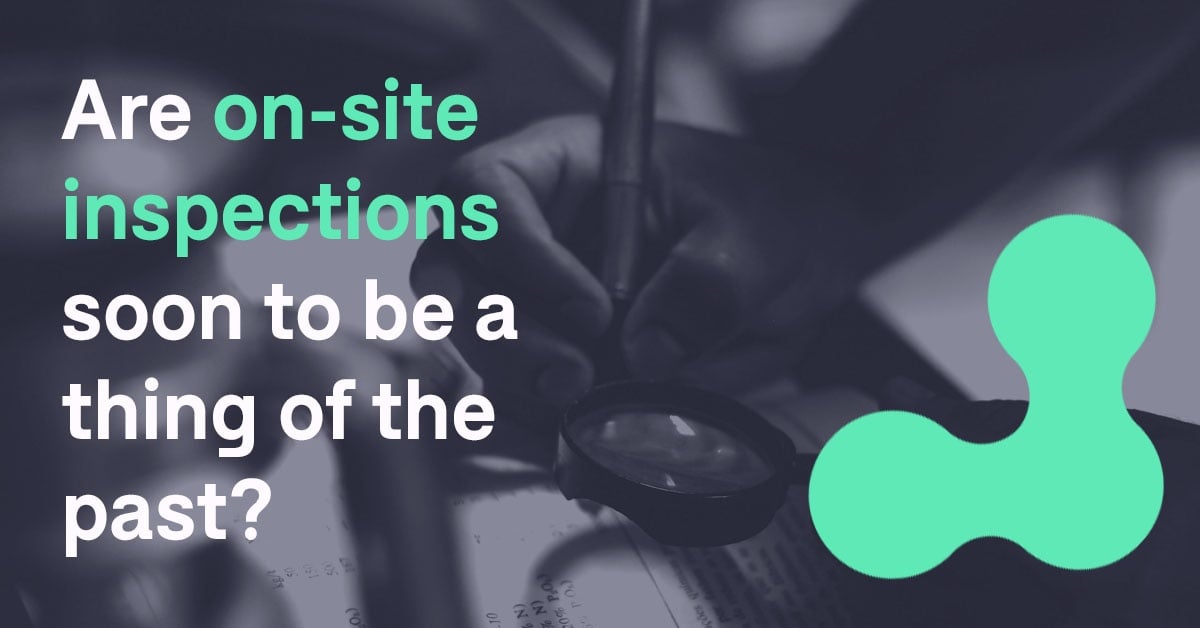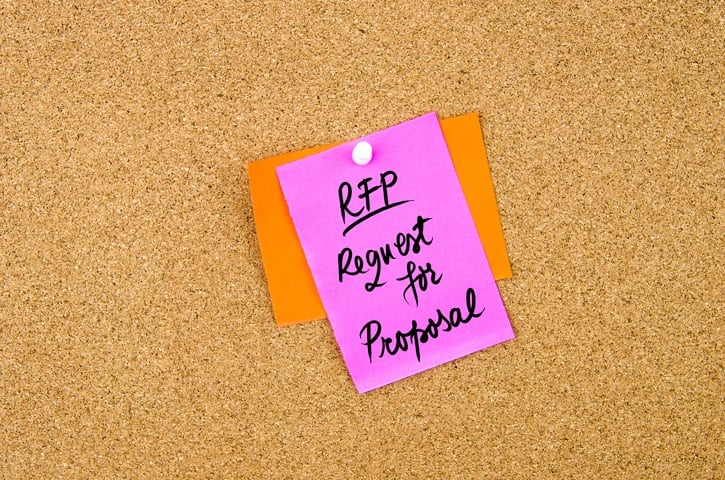
The RFP phase of the vendor selection process is a critical step to successful acquisition of electronic systems. At this stage of the process you’re looking to narrow down your potential list of vendors so that you can get more specific information around their company, the culture, their team and most importantly pricing. Ultimately when searching for new systems and vendors, you’re not only looking for the perfect solution, but also the perfect partner.
In follow up to the first three articles in this series; Software Vendor Selection: Defining Your Requirements, Software Vendor Selection: Searching for the Right Vendor, and Software Vendor Selections: The Pitfalls and Successes of Vendor Demos we will now take you through the fourth phase of software vendor selection which is centered on obtaining proposals.
Develop your vendor shortlist
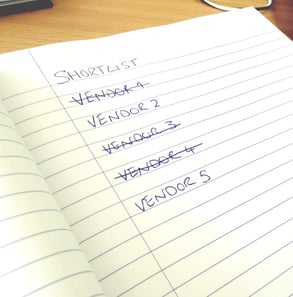 After you’ve attended all of your vendor demonstrations, it’s time to meet with your vendor selection team again to discuss who did and didn’t make the final cut. At this point you should have gathered a wealth of information about the potential vendors from your teams’ notes, product information sheets and other content (videos and presentations etc). Work with the group to scale down your list to 2-3 vendors based on your requirements and begin to identify vendors that you see your organization working with long term. This process isn’t easy as most enterprise software markets have matured significantly over the last decade and competition is high. This fierce competition often forces vendors to get better on functionality, price and value just to stay in the race. This is great for all software buyers.
After you’ve attended all of your vendor demonstrations, it’s time to meet with your vendor selection team again to discuss who did and didn’t make the final cut. At this point you should have gathered a wealth of information about the potential vendors from your teams’ notes, product information sheets and other content (videos and presentations etc). Work with the group to scale down your list to 2-3 vendors based on your requirements and begin to identify vendors that you see your organization working with long term. This process isn’t easy as most enterprise software markets have matured significantly over the last decade and competition is high. This fierce competition often forces vendors to get better on functionality, price and value just to stay in the race. This is great for all software buyers.
Begin developing your RFP
With your shortlist of possible vendors at hand, you must now look to find out more about how the products and vendors meet (or don’t meet) your needs. It’s important to learn more about the specific organizations behind the products and how they manage knowledge transfer. Do you want to have a “Black Box” type solution that is acceptable out-of-the-box but is not modifiable, or is one that is configurable more in line with your needs? This process is traditionally conducted through an RFP process (Request-for-Proposal), which is similar to your RFI document but describes in greater detail your current environment and specifically asks for the information that you need to know about the product, and more specifically, pricing.
Your RFP should be able to capture:
- Business Overview & Background
- Specifications
- Assumptions and Constraints
- Terms and Conditions
- Selection Criteria
You don’t always need a formal RFP process
It’s important to note that an RFP process isn’t always applicable. More and more we are seeing the need for RFP’s diminish since companies are now able to access a greater level of information from websites, web meetings and demo’s to enable them to make more informed decisions.
 A traditional RFP exercise can be quite time-consuming and labor-intensive, often taking months to compose, distribute, collect and review responses. Therefore, if you feel like you can gather information and narrow down vendors by your own means, you should do so.
A traditional RFP exercise can be quite time-consuming and labor-intensive, often taking months to compose, distribute, collect and review responses. Therefore, if you feel like you can gather information and narrow down vendors by your own means, you should do so.
It can be beneficial at this stage (but not mandatory) to deliver a secondary set of questions that will enable you to learn more about the vendor’s organization without going through the RFP process. Understanding the company size, level of experience, and stability of the potential partner should be evaluated during your selection process. This questionnaire should also cover full project quotations, implementation timelines, training options and integration and migration management.
Requesting formal pricing
While pricing information may have already been exchanged earlier on in the process, or even in your RFP document (if you decide to go that route), it’s critical that you get concrete pricing so that you can objectively evaluate and compare vendor pricing. Typically software vendors provide a high level ball park quote early on in the process, and refine that pricing once they learn more about your specific needs. T this point in the process,you’re looking for something you can take to your execs and financial department for approval.
For a lot of organizations, price is often a key factor in software vendor selection. It’s important to note, however, that if possible try not to let price be the only deciding factor in your evaluation. Software solutions that demand a higher price tag will typically provide greater functionality or quality, something that you should consider as your organization grows. Comparing apples to oranges is only going to make your evaluation more difficult.
In summary:
- Narrow down your potential vendor list to 3 vendors
- Decide whether you need to go through an RFP process
- Collect information based on what you need to know about the product
- Request quote to identify total project cost





